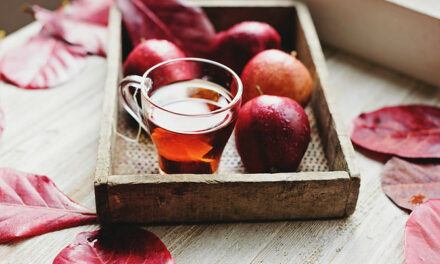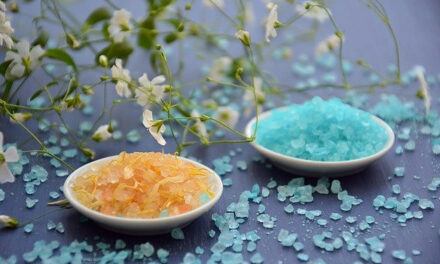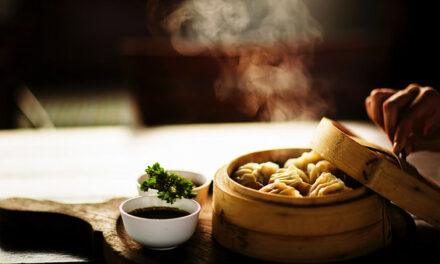The fashion industry and cotton seem to be intertwined. This is why you will find in any household and down to the closets, different types of cotton materials ranging from plain cottons, dyed cottons, or mixed cotton materials. Cotton is one of the numerous nature-based gifts to us, which has made clothing and other essential materials possible for a smooth and hitch-free existence. But for people with diabetes, what are the concerns of using cotton-based clothing. In other words, what are the best cotton types for diabetics?
Let’s find out, but before that what we really mean by cotton?
What is Cotton?
Cotton is that part of cotton plants that grow in the boll. It could also be said to be the encasing for the fluffy cotton fibers. It is a staple fiber, and by this, it means that it is made up of different lengths of fibers.
The genus Gossypium which cottons are made from are natural fibers of cotton plants. The fibers can be made into fabrics ranging from light-weight voiles, laces, heavy sailcloth’s, etc. They are all suitable for different purposes, like home furnishings, apparels, and industrial purposes.
Moreover, the primary component of cotton is cellulose. Cellulose, in addition to being an insoluble organic compound, is very important to plant structure. It is also soft and fluffy material.
For cottons to thrive well, it needs a good amount of sun, a long period without frost, with a good amount of rain.
Cotton is one of the world’s highest and leading agricultural crops, abundantly and economically produced, which makes cotton products affordable.
What are the Uses of Cotton?
Cotton serves a variety of purposes, but it’s main uses include
1. For making woven fabrics
These woven fabrics include canvas, denim, damask, flannel etc.
2. Used for making clothing
Various clothes it can be made with includes T-shirts, jeans, dresses, sweats etc.
3. For making bed-sheets and towels
Because of its very soft and absorbent property, it is suitable for bedroom linens and towels needed to sop up the moisture.
4. For making underwear
This is due to its soft and absorbent property.
5. For making home decorations
Cotton can be used for curtains, rugs, pillows etc.
6. For cottonseed oil
This can be gotten from the cottonseed and further used for salad dressing and margarine.
Types of Cotton Fabrics
There are different types of cotton grown all over the world. Most of them can be found in a variety of products widely in circulation.
- Gossypium Hirsutum
This is commonly found in Central America, Mexico and the Caribbean.
The majority, 90% of the world’s cotton production is made up of Gossypium Hirsutum, and they are commonly known as Upland cotton.
They can be used for different consumer products in the case where the manufacturers are looking for natural fibers with higher quality and great level of purity.
Upland consists of 95 per cent of the cotton grown in the US soil. They can be used for a great number of non-woven products from where products of feminine hygiene and baby care are produced from. They are short-staple cotton fibers meaning that its quality is not as high as other forms of this textile fiber.
- Gossypium Barbadense
This is commonly found in South America and has been transported to different locations around the world.
About 8 per cent of the world cotton production consists of Gossypium barbadense.
It is very much expensive as compared to Gossypium hirsutum, and this is because it is less abundant. They are commonly known as Pima cotton.
They can be used for a variety of purposes, especially for apparel and bedding applications.
Pima is very strong, soft, resist peeling, wrinkling or fading. They are extra-long-staple cotton which is why you will see the variety used in some of the best fabrics in the world.
- Gossypium Arboretum
This is commonly found in India and Pakistan and also in societies that make use of muslin. They comprise less than 2 per cent of global cotton production.
Gossypium arboretum is the type of cotton commonly known as Tree cotton.
Muslin is a plain weave gauzy fabric which gives room for enough breathing with its form maintained over time. It is also used as a cooking filter, and as gauze in the modern world. Muslin is highly durable as a result of the high tensile strength of the tree cotton fibers which it is derived from.
- Gossypium Herbaceum
This is commonly found in southern Africa and the Arabian Peninsula. It consists of less than 2 per cent of the global cotton production. They are also known as Levant cotton.
The Levant is spinning into yarns for the purpose of making different fabrics. They are also used by societies in the developing world for a wide range of medicinal purposes ranging from treatment of nausea, headaches, fevers, hemorrhages and diarrhea.
Different Varieties of Cotton Fabrics
- Short staple cotton
These are cotton of any type which consists of fibers up-to 1.25 inches long. They are suitable for everyday use but not as soft as other cottons.
- Long-staple cotton
These are cottons which fibers are 1.25 inches long. They are considered to be more ‘luxurious’ than short-staple cotton type.
- Extra-long staple cotton
These are cottons which fibers are more than 1.25 inches. It is the most luxurious and softest cotton there is.
- Egyptian cotton
This refers to no particular cotton type. Rather, it is a term that refers to certain forms of either long-staple or extra-long-staple cotton.
Other Common Types of Cotton Fabrics
They include…
- Cotton lawn
This is a thin, high thread count cotton fabric. It is tight weaved and made with a fine thread.
This accounts for its smooth surface texture, making it very suitable for blouses, skirts and other clothes used in the warm months.
- Cotton jersey fabric
It is characteristically soft and stretchy. The fabric is very soft, and its cotton is made with elastane.
Cotton jersey fabric is very good because it can be made into different fabrics ranging from breathable summer tops to base layers for the winter months.
- Cotton poplin
This is a plain weave cotton fabric which is lightweight. It can be turned into different clothing items which can be worn all year.
It can be made into different dresses like sportswear and raincoats and women dresses. It can serve well for all manner of casual and formal wear.
- Chambray
This has a softer and thinner texture.
Its warp and weft have different colors. It is very suitable for the summer months both for men and women’s dresses.
- Brushed cotton
This is a combination of various fabric structures. It has a very soft and smooth finish, making it very suitable on the skin because it does not itch. This helps the fabric to reduce sweat, and it is very perfect for diverse dresses.
- Cotton drill
This is very suitable for work clothes and uniforms.
Its material is dense, strong, medium to the heavy-weight fabric. It is perfect for all sorts of garments.
- Seersucker fabric
This is a light-weight cotton fabric. It rarely needs ironing. Very suitable for shorts, shirts, and suits and best suited for warm weather because it is light, durable with good space.
- Aertex
It is loosely woven and has a light-weight. It can be used to make shirts and underwear.
- Absorbent cotton batting
This is mainly used for the medical and cosmetics field. They are used in cleaning, and they are made of cotton devoid of natural oils.
- Algodon cotton
This is known as Algodon Paia, and it is a variety of native cotton growing in Peru.
- Baft
It is a cheap coarse cotton fabric.
Now let’s turn on how cottons affect diabetics and best cotton types for people with diabetes from all the types mentioned above.
Best Cotton Types for Diabetics
There are different recommendations, but over the years, Egyptian cotton stands out as one of the best cottons. Giza cotton has been noted to be one of the best quality fabrics you can find in the market. They can be used to make a variety of things ranging from sheets to shirts, to broad cloths to socks. Giza cotton has some wonderful qualities that make it well suited for diabetics and anyone in general, and they include;
- It’s very long fibers, and chemical-free nature makes it able to allow for air circulation. In other words, it is highly breathable. Diabetic don’t need anything that will hitch their authority circulation.
- It can soak up to 20% of its weight before it starts feeling damp because of its high moisture absorbency.
- For those with sensitive skin and different allergies, Giza cotton is a good option. This stems from the fact that it is sort into yarns and gives no room for skin irritation.
- Giza cotton offers you great comfort and makes you cool, especially during summer.
The different Giza varieties include;
- Giza 45
It has been the oldest Giza cotton in Egypt, and it is still grown till date. It is also the most famous.
Due to its fineness, Giza 45 has the highest spinning potential and the greatest quality. It has very long fibers.
- Giza 87
This is light-weight cotton, but very strong. It is a cross between Giza 45 and Giza 77, which makes it a very rare and exceptional variety.
Giza 87 is 1.378 inches long, and it has higher regularity, cleanliness and resistance. This makes this Giza variety very much suitable for making strong and fine yarns with unique silk and soft consistency.
- Giza 93
This has been noted to be the finest cotton worldwide. It was introduced as a cross between Giza 77 and PS6 by the Egyptian researches of the Agricultural Ministry.
Its fiber length is 1.457 inches hence superior. It surpasses Giza 45 due to its strength, spinning properties and softness.
Other Suitable Cotton Types for Diabetics
They include;
- Cotton gauze
- Cotton voile
- Cotton lawn
- Cotton chambray
- Cotton sateen
- Cotton corduroy
- Pima cotton
Not only the cotton types, when it comes to choosing clothes for diabetics, the color of the clothing also matters.
Best Cotton Colors for Diabetics
For example, diabetic socks are made primarily for protection. The color of the socks you are wearing doesn’t affect its functionality. This means that while choosing diabetic socks you don’t necessarily need to look out for a particular color instead you should select a sock based on the condition of your feet at the moment or based on what you hope to achieve with the socks.
Nevertheless, light-colored socks, especially white and gray are best recommended for people with diabetes. This is for no other special reason other than the fact that it makes it very possible to monitor your feet.
When you are wearing white socks, it will be very easy to notice any complications with your feet. It will be very easy to notice things like boils, blister or cut. You will also notice when there is any leaking pus, blood or other injuries. It will also be straightforward to keep track of your foot hygiene because it will always show when it gets dirty.
This does not mean that you can’t rock any color of diabetic socks with your outfit. It simply means that if you are not going for transparent colors or if you are going for black, you will have to monitor your feet regularly as you won’t be able to see through the socks.
Tip: Nano socks and copper socks are two of the best types of socks for diabetics.
Why Should Diabetics Wear Cotton Socks?
- Cotton socks for diabetics offer protection
Socks are generally made for protecting the foot. Same is applied to cotton socks for diabetics as it will protect us from getting unnecessary cuts, infections, blisters and the rest. So, having cotton socks on can save you a whole lot of stress and damages.
- Cotton socks can keep your feet dry
Dry feet prevent bacterial and fungal infections.
Diabetics socks generally have a greater tendency to keep your feet dry when compared to ordinary socks. This is because of the special fabric they are made with.
Cotton socks are made with materials that wick away moisture, thereby keeping your feet dry during activities like exercise or a long walk. It may also take a long while because cotton socks don’t dry fast, but it is better than normal socks.
In the case of normal socks without special fabrics, your feet will always be damp after a long day, and it will make it difficult for your feet to always heal cuts and blisters thereby putting you at risk.
- Diabetic or cotton socks usually has extra padding which helps in preventing cuts and blisters
Once the cotton socks are designed for diabetics, it usually contains extra padding and zero seams, especially the ones with acrylic properties. This will help prevent uncomfortable rubbing on the tips of your toes and then the extra padding will be in key areas where blisters usually form.
For those who take long walks and do a lot of exercises, the extra padding will go a long in preventing the formation of new blisters or corns.
- Increases blood flow
For diabetics, peripheral neuropathy is a common occurrence. In this case, blood flow is always restricted. That is why cotton socks for diabetics are designed in such a way that it does not restrict blood flow.
In the case of normal socks which might cause a small restriction, diabetic socks are fully designed to fit in fully without any type of restriction to blood flow.
Once your blood flow is impaired, you will always have that feeling of the frozen foot, especially during winter. With free-diabetic socks, your feet will always feel warm and comfortable.
- White cotton socks to know when you have bleeding
Most cotton socks for diabetics are usually white, so this will enable you to know when you are having a fresh cut or when you are having infections.
Tip: These are the best sandals for diabetics.
Acrylic Socks vs Cotton Socks – Pros and Cons for Diabetics
Pros
When compared to cotton socks, acrylic socks do well at retaining moisture, unlike cotton socks. This is very good for diabetics because it will prevent dampness of the feet.
Acrylic socks also have natural bacteria-fighting properties. Some acrylic socks also have a blend of charcoal and silver as it further helps them to prevent fungal infections and foot odor hence it is very good for diabetics.
Acrylic socks have more padding than cotton socks, and this makes it more suitable for keeping off blisters and corns.
Considering of Acrylic Socks
Acrylic socks can lose insulation once wet. They are not so comfortable as compared to cotton socks.
Acrylic socks can be less comfortable in hot conditions.
Wool Socks vs Cotton Socks – Pros and Cons for Diabetics
- Wool socks are naturally a thermoregulator. They keep the temperature at your feet normal both in cool and warm temperature.
- As wool absorbs moisture, it evaporates immediately, thereby keeping the feet dry. This makes the feet environment comfortable and breathable.
- By having dry feet, it will help in keeping blisters away. This is useful for maintaining good foot health.
- Wool has enough resilience, and that offers enough protection for the foot.
Cons
- Wool is not all that comfortable for everyone, and it is not as affordable and readily available as cotton socks.
Bamboo Socks vs Cotton Socks – Pros and Cons for Diabetics
As compared to cotton socks, there are additional benefits of bamboo socks for diabetics.
- Bamboo is not just a natural fiber, it is grown without chemicals or pesticides. This gives it the very rich cotton fibers it has once after being processed.
- Bamboo provides 60% wick protection than cotton alone. This makes it to stay dry, thereby reducing the risk of fungus on the toenails.
- Bamboo has been noted to be great for sensitive skin as it is non-irritating and hypoallergenic.
- Bamboo is very odour-resistant, antibacterial as well as anti-fungal.
- Bamboo, in addition to being eco-friendly, is also durable.
- Bamboo fits the foot very well without feeling big or bulky. This helps to keep away the risk of rubbing your foot which in turn reduces the formation of blisters and other foot complications.
- Bamboo has a great thermo-regulating property, which makes it possible for it to keep the feet warm in the winter and cool in the summer. This is very good for those with diabetics, as they find it hard to regulate their temperature due to circulatory problem
- In terms of maintenance, diabetics can easily maintain bamboo socks.
- Bamboo helps prevent sunburn, which is a very serious complication for diabetics. This is possible because bamboo has UV protection without added chemicals.
Cons
- Bamboo socks are not as readily available as cotton socks, and they are more expensive.
Conclusion
For diabetics, there is a wide range of fabric options to choose from. It is best that you choose based on your condition or the need you want to satisfy. Always ensure to have diabetic socks on, especially when you have peripheral neuropathy or other diabetic-related complications.













Diabetes-friendly clothing is something new in the fad. By including these kinds of clothing, it will make it ever the more easier to help the patients undergoing treatment to ascend towards a higher comfortable state. Cotton socks are the best to help in blood flow, warming up and decrease the friction, all while enough grip is provided.